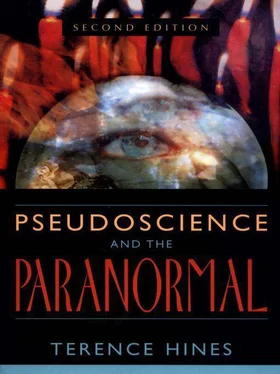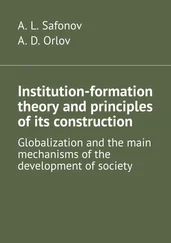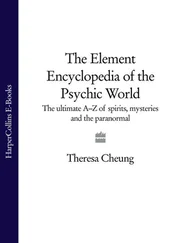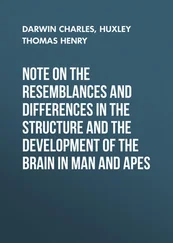The results of the commission’s tests were clear. When subjects believed, incorrectly, that they were being magnetized they behaved in the same way as when they knew that they really were being magnetized. The symptoms could be dramatic—they might “shake, groan, scream or even faint” (Shermer 1996, p. 66). Further, subjects could not distinguish a magnetized object from a group of similar, nonmagnetized objects. These results led the commission to report that animal magnetism did not exist and that the “power of suggestion” (p. 67) was responsible for the effects seen. The full eighteen-page text of the commission’s report has only recently been translated into English and can be found in Salas and Salas (1996). It makes fascinating reading. One can only speculate how much pain and suffering would have been prevented had what might be termed the “Franklin method” of testing of therapeutic claims been widely adopted at the end of the eighteenth century.
Claims that magnetism could be used therapeutically were not often heard for the next two hundred years or so. But with the rise of “alternative” medicine, magnetic therapy has been making a strong comeback, although in a form very different from mesmerism. The current claim is that real magnetic fields can take away pain, make wounds heal faster, and improve sleep, among other things. Becoming increasingly popular are pillows, bed pads, insole pads, and wraps for various body parts that have magnets sewn into them. The promotional literature for these products is based largely on testimonials—and we have already seen how unreliable such testimonials are. As usual, we must turn to the experimental scientific studies of the therapeutic effects of magnets to find out whether they really work.
Magnetic treatments are quite recent as compared to, say, homeopathic treatments, so there are far fewer studies of the effectiveness of magnetic therapy. I have been able to find only one review of studies of the outcome of magnetic therapy (Ramey 1998). I will summarize this review, but the interested reader should consult the actual Ramey paper for further details. Ramey divides magnetic treatments into two types: those using pulsating magnetic fields and those using static magnetic fields . The magnetic fields produced by magnetic in beds, shoes, wraps, and the like are static fields because the position of the magnets is more or less constant with regard to the person using them. Somewhat surprisingly, the Ramey found more studies on the effects of magnetic therapy in veterinary practice (exclusively with horses) than in human medicine. It is not clear why this is the case, but perhaps animals simply make more placid subjects. In any event, Ramey summarizes these studies thusly: “[T]here appear to be no scientific studies available that demonstrate that any form of magnetic field therapy is valuable in the treatment of disease conditions of the horse” (p. 17). These conditions, as would be expected given the species of the patient population, deal with bone and related tissues.
In humans, the few studies of the effects of static magnetic fields that have been published have examined pain relief. Ramey (1998) found two studies from Japan that reported positive effects of static magnets on pain, but both were “poorly controlled.” Of three studies that were better controlled, one showed some beneficial effects and two showed no effect. Since Ramey’s review, several additional relevant studies have been published. Only one combines an adequate experimental methodology with findings of a significant effect of magnets. This is a study by Vailbona et al. (1997) in which magnets were found to have a greater pain-reducing effect than placebo magnets in patients suffering from post-polio pain.
Weintraub (1998, 1999) examined the effects of static magnets on pain in peripheral neuropathy patients. His first (1998) study had no placebo control group and was not conducted blind—that is, the patients knew they were being given magnetic insoles and knew that these were supposed to reduce pain. Of the nine patients who submitted pain ratings, six reported a decrease in pain. It is impossible to tell, given the design of this study, that this was not a placebo response. It is important to note in this regard that Lin et al. (1985) have shown that placebo effects seem to be particularly strong when the effects of magnets are being studied.
In a second study, Weintraub (1999) used a more complex experimental design. Subjects were each given two insoles. One was magnetic and the other was not. They were to wear the two insoles, one on each foot, for a period of two months, and then switch them for another two months. The patients were outpatients, and so wore the insoles at home. They were instructed to use them even while sleeping by wearing them inside a sock or stocking. Weintraub argues that the nonmagnetic insole constitutes a placebo, but this is not actually the case because it would be extremely easy for the patients determine which insole was magnetic and which was not. All one would need to do would be to hold one or both of the insoles up to a metal appliance to see if it sticks. Weintraub’s results do show what appears to be a greater pain reduction effect for the magnetic insole, but given the ease with which the “placebo” control could be broken, this is not terribly convincing.
Collacott et al. (2000) performed a study that also used placebo magnets. In this study, however, it would have been difficult for the patients to determine whether they were using a real or placebo magnet. The subjects, out patients suffering from chronic lower back pain, had the magnets or placebos held in place by “a thick abdominal binder” (Collacott, personal communication). In this study there was no difference in effect between the magnets and the placebos.
Thus, of the four studies published since the period covered in Ramey’s (1998) review, one has found evidence that static magnetic fields provide benefit, two are likely due to placebo effects, and one failed to find any effects of such fields. Combined with the studies described by Ramey, the reasonable conclusion is that static magnetic fields do not have any effect on pain reduction.
Acupuncture, the ancient Chinese technique for reducing pain by inserting long needles into the skin at various points, received considerable Western attention after President Richard Nixon renewed relations between the United States and the People’s Republic of China in the early 1970s. The first reports of this technique certainly sounded unlikely—how could inserting needles into the skin reduce pain? It was certainly the case that initial reports of major surgery being done with only acupuncture used as the anesthetic were exaggerated. But research over the past thirty years has suggested that acupuncture may have some real effects, for at least some types of pain and perhaps other types of problems. The literature on this topic is vast, to say the least. The best recent summary is a book edited by Ernst and White (1999). In that book Ernst (1999) reviews studies of the effectiveness of acupuncture for various disorders. He concludes (his Table 5.9, p. 126) that acupuncture has been shown to be “conclusively positive” for dental pain, low back pain, and nausea and vomiting. This conclusion should be tempered by the fact that with hundreds of studies being done on a topic like acupuncture, some will show significant positive results by chance alone. Ernst concludes that acupuncture has been shown to be “conclusively negative” for smoking cessation and weight reduction. There are a number of disorders for which, Ernst concludes, the evidence is inconclusive. These include experimentally induced pain, neck pain, headaches (including migraine), osteoarthritis pain, inflammatory rheumatic disease, stroke, various addictions (other than smoking), and asthma. In regard to chronic pain only, Ezzo et al. (2000) reached a somewhat more pessimistic conclusion that “there is limited evidence that acupuncture is more effective than no treatment for chronic pain; and inconclusive evidence that acupuncture is more effective than placebo, sham acupuncture or standard care” (p. 217). In spite of its common use to eliminate addiction to cocaine, in a study of more than 600 addicts acupuncture was shown to be no better than various placebos (Margolin et al. 2002). Obviously, the study of acupuncture’s effectiveness will continue.
Читать дальше












